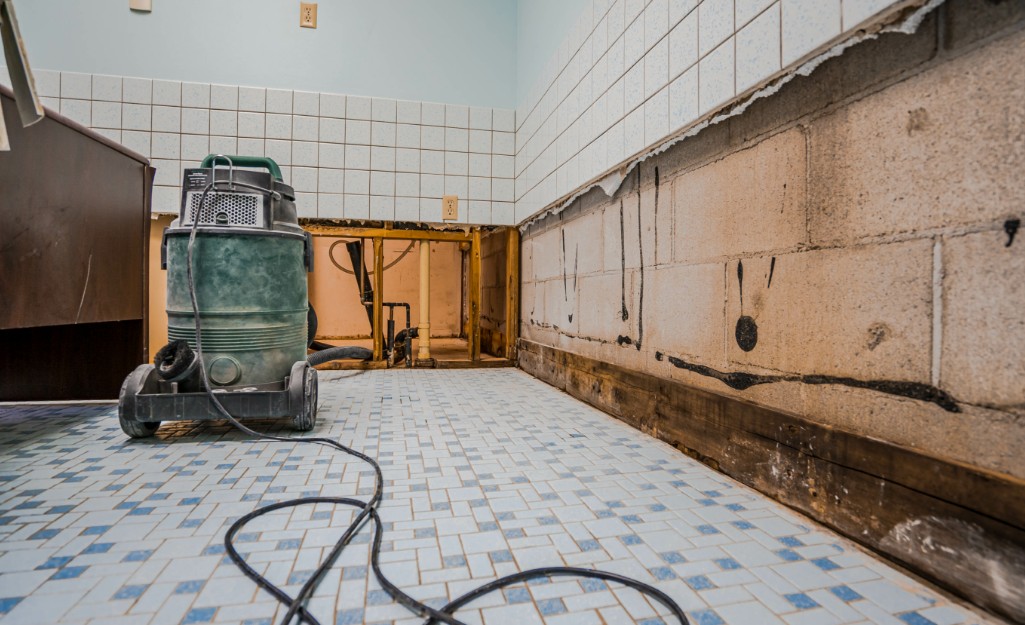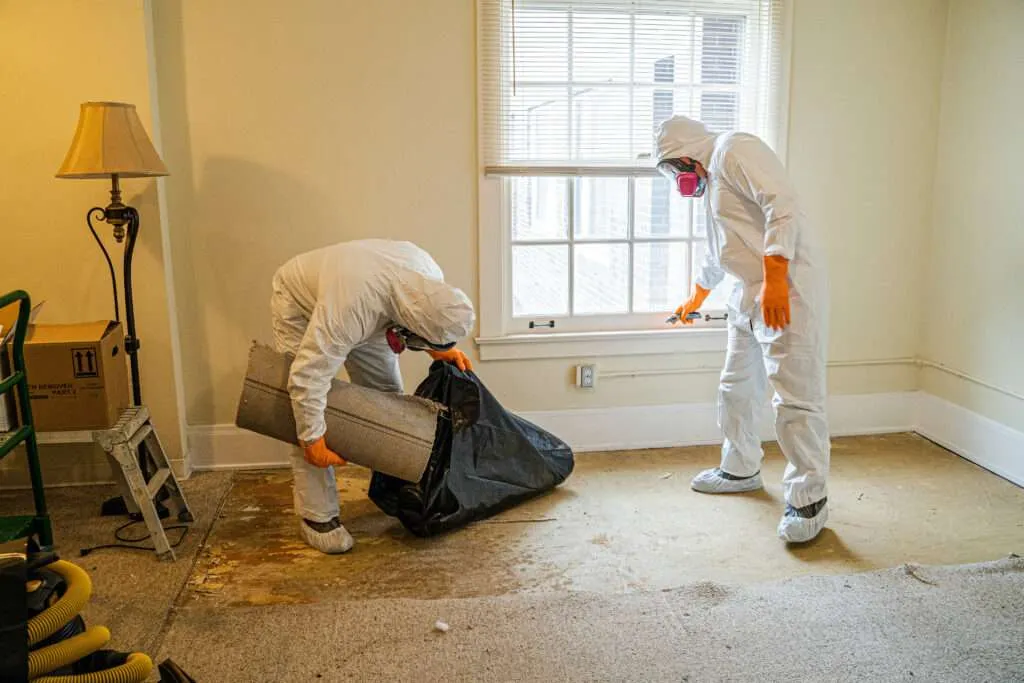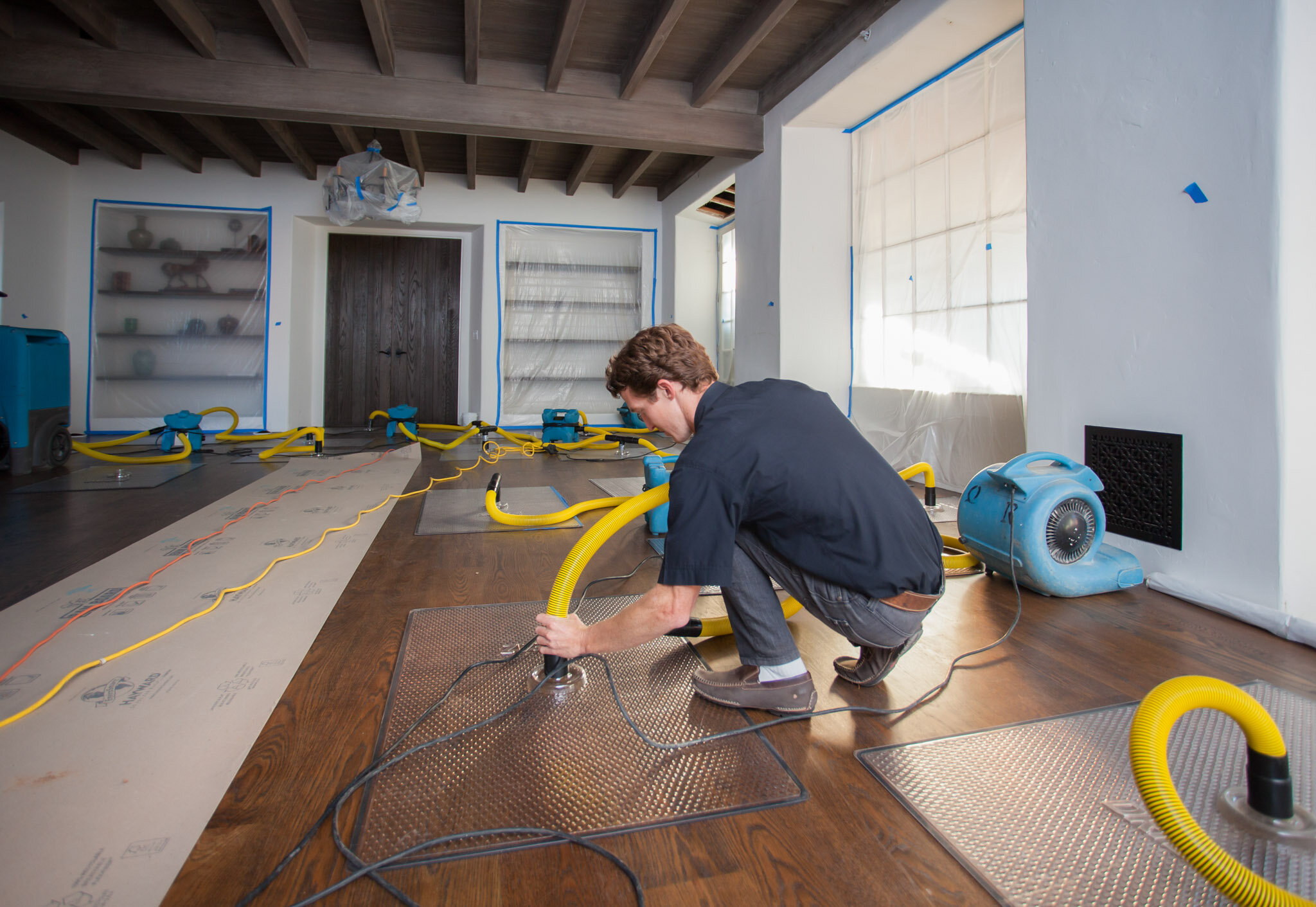Water Damage Restoration 101: Understanding the Process and Expense
Water damage can strike all of a sudden, leaving homeowners in a state of confusion. Comprehending the reconstruction procedure is essential for effective recovery. From reviewing the damage to picking the best company, each step affects the general end result and expense. Aspects such as the kind of water damage and urgency additionally play a significant duty. What are the specific strategies utilized in restoration, and exactly how can one plan for prospective expenses?
Types of Water Damage

Preliminary Evaluation and Inspection

Water Extraction Strategies
Following the initial analysis, efficient water removal techniques are used to reduce damage and avoid more issues. These methods include the use of customized devices such as submersible pumps and industrial-grade vacuum cleaners - Mold Remediation After Water Damage. The selection of technique depends upon the volume of water present and the kind of materials affected. For standing water, submersible pumps are normally used for rapid removal, while vacuums are optimal for removing water from carpets and furniture. Furthermore, advanced approaches like water removal mats might be employed for hard-to-reach locations - Water Damage Restoration. The goal is to remove as much water as possible, decreasing the capacity for mold development and structural damage. Motivate and reliable water extraction is essential in the total water damage restoration procedure
Drying Out and Dehumidification Process
When the water extraction is full, the drying out and dehumidification process becomes vital to bring back the damaged location. This phase normally uses industrial-grade dehumidifiers and air moving companies to effectively minimize wetness levels. The dehumidifiers reel in wet air, removing excess moisture, while air moving companies flow air to speed up dissipation. Tracking tools is frequently utilized to track moisture and temperature level degrees, ensuring perfect drying conditions. The duration of this procedure can differ depending upon the degree of the water damage and ecological variables. It is vital to extensively completely dry all affected materials, consisting of walls, floor covering, and home furnishings, to prevent mold and mildew growth and structural damage. Correct implementation of this step is crucial for a successful remediation outcome.
Cleansing and Disinfecting Afflicted Areas
As soon as the drying out process is complete, a thorough initial analysis and examination of influenced locations is essential to determine contamination degrees. Efficient cleansing strategies and suitable products have to then be employed to remove particles and spots. Lastly, sanitization and sanitation methods are vital to guarantee that unsafe virus are gotten rid of, recovering the space to a secure condition
Initial Analysis and Inspection
Before beginning any repair efforts, a comprehensive first assessment and examination of the influenced locations are important for effective cleaning and sanitizing. This procedure entails identifying the degree of water damage, figuring out the source of the water intrusion, and assessing the products affected. Examiners typically try to find indicators of mold and mildew development, architectural honesty concerns, and harmed items. The evaluation likewise includes checking wetness levels using specialized devices to ensure no concealed water pockets stay, as these can bring about additional problems. Documenting the findings is essential for planning the next action in the repair procedure. A thorough first analysis makes it possible for restoration professionals to devise a targeted strategy for efficient cleaning and disinfecting, eventually decreasing damage and health and wellness threats.
Cleaning Up Techniques and Products
Effective cleansing and sanitizing of water-damaged locations call for a variety of methods and items tailored to the details materials influenced. For porous surface areas like drywall and carpets, removal methods are important to remove excess moisture, complied with by deep cleansing with specialized detergents. Non-porous products such as floor tile or metal can be cleaned making use of commercial-grade cleansers that successfully get rid of impurities. Steam cleansing is an additional effective technique, specifically for carpets and upholstery, as it utilizes heats to eliminate microorganisms and mold (Flood Cleanup Services). Furthermore, green items are increasingly preferred for their safety and efficiency - Water Damage Restoration. Eventually, selecting the proper cleansing approaches and items not just assures immediate sanitation but additionally aids in stopping more damage and carcinogen related to water intrusion
Sanitization and Disinfection Methods
When attending to water damage, proper sanitization and disinfection techniques are vital to guarantee the safety and security and health of the afflicted environment. After initial cleansing, surfaces have to be treated with suitable anti-bacterials to get rid of pathogens, mold and mildew, and germs that flourish in moist conditions. Common approaches consist of using EPA-approved chemical anti-bacterials, which can be used with spraying or wiping strategies. Furthermore, ultraviolet (UV) light systems can successfully disinfect locations by counteracting bacteria without severe chemicals. The selection of method typically depends upon the kind of products affected and the degree of contamination. Ultimately, complete sanitization not only recovers a safe space but additionally aids avoid future health and wellness dangers related to lingering wetness and mold and mildew development.

Repair Work and Restoration Options
Reviewing the damage triggered by water exposure is crucial for determining the suitable repair work and reconstruction options. Home owners may face various concerns, consisting of harmed drywall, deformed flooring, and compromised structural elements. Depending on the level of the damage, repairs might include changing areas of drywall, setting up brand-new flooring, or reinforcing architectural beam of lights. In cases of severe damage, full substitute of afflicted materials may be required. Additionally, expert conservators frequently advise making use of wetness meters to assess covert dampness degrees before choosing the very best course of activity. It is important to act without delay to stop mold growth and additional wear and tear. Selecting the right options not just brings back the home but also guarantees lasting safety and security and performance.
Aspects Influencing Restoration Costs

The level of water damage straight affects the repair costs home owners can anticipate to incur. Elements such as the source of the water, the period of direct exposure, and the damaged materials greatly influence rates. For example, tidy water damage from a damaged pipeline is normally much less pricey to recover contrasted to damage caused by sewage. Additionally, the level of contamination dictates the requirement for specialized cleaning and disposal services, better boosting costs. Geographical place additionally contributes, as local labor rates and schedule of restoration services can vary. The urgency of the reaction impacts costs; quicker treatments commonly lead to lower total costs by stopping further damage. Recognizing these elements is vital for house owners when approximating reconstruction costs.
The 3 primary kinds of water damage are classified based on contamination degrees: tidy water, gray water, and black water. A complete first analysis and evaluation are vital actions in website the water damage reconstruction process. For standing water, submersible pumps are commonly utilized for fast removal, while vacuums are excellent for extracting water from carpetings and upholstery. The level of water damage straight impacts the reconstruction sets you back property owners can anticipate to incur. Tidy water damage from a broken pipe is usually less expensive to recover contrasted to damage triggered by sewage.